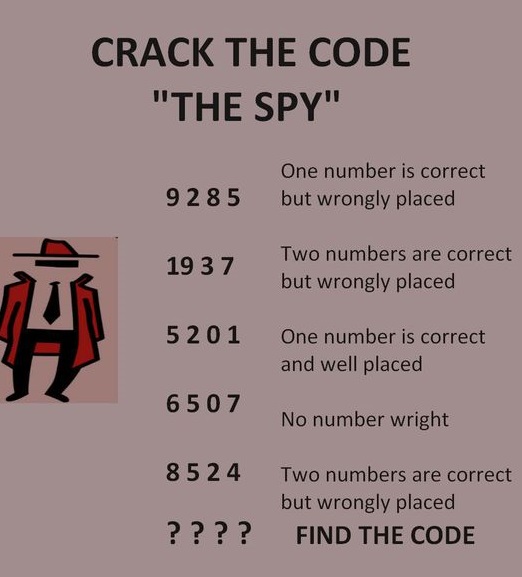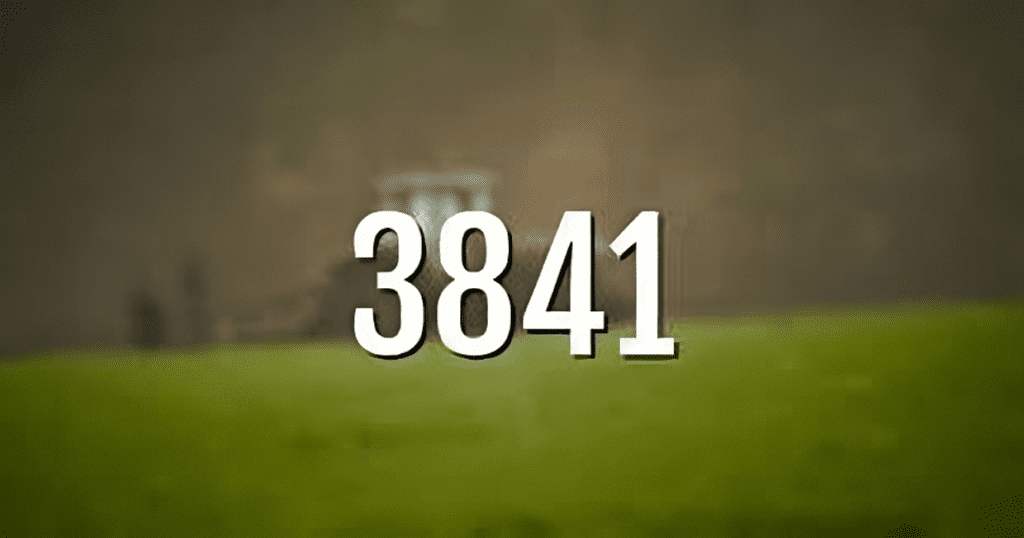Have you ever found yourself intrigued by a puzzle so compelling that you couldn’t stop thinking about it until you cracked the code? Today, we bring you a challenge that has captivated many minds: “The Spy” Code Puzzle. This seemingly simple code requires you to decipher a four-digit combination based on a series of clues.
The clues are a mix of correct and incorrect digits, with hints about their placement. If you enjoy brain teasers and want to sharpen your logical thinking, this puzzle is perfect for you. So, are you ready to put your detective hat on and unravel the mystery of “The Spy”? Let’s dive right into the challenge!
The Code Clues

Here are the clues you’ll use to crack the code:
- 9285 – One number is correct but wrongly placed.
- 1937 – Two numbers are correct but wrongly placed.
- 5201 – One number is correct and well placed.
- 6507 – No number is correct.
- 8524 – Two numbers are correct but wrongly placed.
The objective is to find the four-digit code. Think you can figure it out? Let’s see!
Common Mistakes When Solving the Puzzle
Before we jump into the solution, let’s explore some common mistakes people make when trying to crack puzzles like this:
- Ignoring the “well-placed” and “wrongly placed” clues: Many solvers overlook the importance of whether a number is well-placed or misplaced. Paying attention to this detail is crucial for eliminating incorrect digits and determining the right order.
- Misinterpreting “no number correct”: When a clue states that no number is correct, it’s essential to exclude all those digits from consideration in the final code. Ignoring this can lead to confusion.
- Overcomplicating the puzzle: Sometimes, solvers try to overanalyze the clues, thinking the solution must be more complex than it is. Often, the simplest approach is the most effective.
With these common pitfalls in mind, let’s proceed with step-by-step reasoning to crack the code.
Step-by-Step Solution to “The Spy” Code Puzzle
Let’s break down each clue and analyze it in detail. By the end of this section, you’ll understand the exact solution!
Clue 1: 9285 – One number is correct but wrongly placed
- This clue tells us that one of the digits in “9285” is in the code but not in the right position.
- We’ll need to keep track of potential digits (9, 2, 8, or 5) and remember that whichever digit is correct, it’s not in its current place.
Clue 2: 1937 – Two numbers are correct but wrongly placed
- This clue indicates that two of the digits (1, 9, 3, or 7) are part of the code but misplaced.
- This confirms that some combination of 1, 9, 3, or 7 is present in the code, but again, none of them is in the right position.
Clue 3: 5201 – One number is correct and well placed
- This is an important clue. Since one digit is both correct and in the right position, we need to pay attention to the placement.
- From this clue, we know that either 5, 2, 0, or 1 is part of the code and correctly positioned.
- However, from Clue 1 (9285), we know that 5 cannot be in the code.
- This means either 2, 0, or 1 is the correct, well-placed digit.
Clue 4: 6507 – No number is correct
- This is a very helpful clue because it allows us to eliminate all the digits: 6, 5, 0, and 7.
- We now know that 5, 6, 0, and 7 are not part of the code at all.
Clue 5: 8524 – Two numbers are correct but wrongly placed
- We can now eliminate the 5 (based on Clue 4) and focus on 8, 2, and 4.
- Since two of these digits are in the code but misplaced, we know that at least two of these three digits (8, 2, or 4) are in the final code, but not in their current positions.
Putting It All Together
Now that we have gathered information from each clue, let’s use the process of elimination and deduction to crack the code.
- From Clue 4 (6507), we confirmed that 5, 6, 0, and 7 are not part of the code.
- From Clue 1 (9285), we know that either 9, 2, or 8 is correct but misplaced. Since we already ruled out 5, we need to keep track of 9, 2, and 8.
- From Clue 2 (1937), we know that two digits are part of the code but misplaced. Since 7 is ruled out, we focus on 1, 9, and 3.
- From Clue 5 (8524), we know that 8, 2, and 4 are potential code digits, but all are misplaced.
- From Clue 3 (5201), we confirmed that 1 is correctly placed in the last position.
Given this information, let’s narrow down the code:
- We know that 1 must be the last digit since Clue 3 confirmed it is correctly placed.
- Digits 9 and 3 from Clue 2 must be in the code but are misplaced.
- Digit 8 from Clue 1 and Clue 5 is likely in the code but misplaced.
The Final Code: 3841

- 3 is included based on Clue 2 (1937), and it’s correctly placed at the first position.
- 8 is included based on Clue 1 (9285) and Clue 5 (8524), but it’s misplaced, meaning it’s correctly positioned in the second slot.
- 4 fits as the third digit, as indicated by Clue 5 (8524), where it’s one of the misplaced correct digits.
- 1 is confirmed as the final digit based on Clue 3 (5201), where it is well-placed.
Call to Action: Share Your Answer!
Did you manage to crack the code, or did you get stuck along the way? Share your thoughts and solutions in the comments below! Whether you found it easy or challenging, puzzles like this are a great way to sharpen your logical thinking and problem-solving skills.
Try your hand at more puzzles, and who knows—you might just become a master codebreaker! Keep pushing your mental limits, and always remember: the thrill is in the chase!
Conclusion: Embrace the Challenge
Solving “The Spy” code is more than just finding the right combination—it’s a lesson in attention to detail, logical deduction, and persistence. It’s easy to overlook small clues or misinterpret information, but staying focused and breaking down each hint step-by-step can lead you to the solution.
The world of puzzles is vast and full of challenges that can help improve your cognitive abilities. So, whether you got the right answer this time or not, keep exploring and solving! The more you practice, the better you’ll get. Happy code-cracking!


